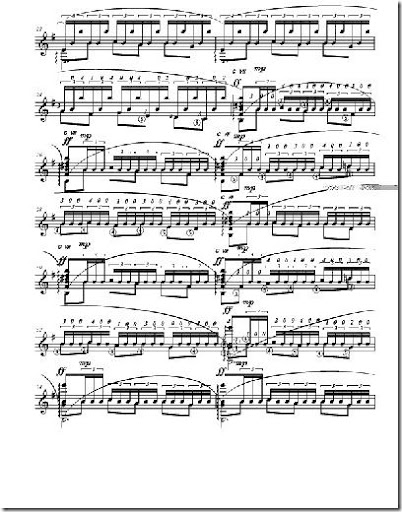We've basically turned the page and measures 22 through 24 are more of what we looked at in last week's session. At measure 25 the section begins that separates the players from the students. Pitfalls? Two. The first one is the last two sixteenth triplet notes that end each measure. These are the most often overlooked (as in 'not played') notes in the guitarist's repertoire. In preparing for the rasgueado chord that invariably follows, most students drop those two B's. Funny, they never notice it in performance, but when they hear the tape
The problem is the right hand has to move out of normal playing position to get that rasgeado lined up. The best solution is to rasgueado from a cupped hand position, extending the fingers to execute the rasgueado.This all hinges into the second pitfall. Landing on the barred chord with enough accuracy that one can rasgueado without sounding like a flubbed chord. Accuracy comes from playing this passage slowly. I have heard some performers actually do a slight retard at the end of each measure, thereby catching those last two sixteenth triplet notes and allowing enough time for a proper set-up on the chord. If this interpretation works for you, terrific. It's still better to let taste dictate performance rather than a technical inadequacy. Practice it slowly so that you can perform the passage cleanly at speed.
Measure 33 gives a bit of left hand relief, but the 'worst' is yet to come. Tune in next week for the gory details!
Follow left hand fingering religiously because it was generated not so much to aid performance but to maintain melodic flow.











No comments:
Post a Comment